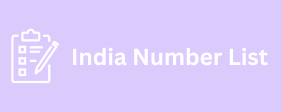You will only have one H1 per article, and this is usually the title of your article. It may be different from the page title you chose, because the page title is limited to 60 characters, but your H1 is not.
The H1 should contain the overall topic of your article. It is located at the top of the page and is the largest font you will find on that page. c level contact list summarizing the topic your reader will learn about. Make sure the H1 includes the article’s keyword to optimize it for SEO.
H2 Headings
Unlike H1 headings, you can have multiple H2 headings throughout your content. These headings help separate your content. These headings should be descriptive of the content they contain. Keep these headings short for easy reading.
Readers should be able to read the title and understand what they will learn in that section of the blog.
H3 Headings
Like H2 headings, H3 headings provide more context for what the reader will learn. But these headings help break down what the reader will learn by viewing a given section of text.
H3 headings should be specific and detailed about your content. You will use them many times throughout the article to provide more insight into what you are writing.
Just because H3 headings aren’t primary doesn’t mean you should write anything you want in them. You still want to use keywords carefully to attract readers and give search engines more information about your content.
Headings H4-H6 with explanations
H4-H6 headings are used less frequently in content. Only the most complex topics use these headings to show how the content fits together. You won’t find them in short articles, but they can be very useful in pillar posts or very in-depth pieces. If you’ve reached these lower-level headings, you may be wondering if you should convert the content to an ebook or other format to make it more readable.
Best Practices for Using Headings
Now that you know more about headings, let’s pensioners should prepare for trips summarize all this useful information into a few bullet points to make it easier to apply these lessons to your content.
- Each article and page on your site should have only one H1 tag.
- Use H2-H4 to expand on the topic and show content hierarchy.
- Headings should use different font sizes and styles to clearly show the hierarchy to readers.
- Include keywords in your titles
- Avoid large blocks of text by breaking them into different sections.
- Write compelling headlines to attract readers and make your content attractive.
Writing content that both resonates with readers and ranks well in SEO requires the proper use of headings. If you need help optimizing your europe email content, schedule a free consultation with New Light Digital.
Further reading:
- What is the difference between good content and great content?
- The success of your website depends on more than just SEO
- How Often Should You Blog for Best SEO Results.
